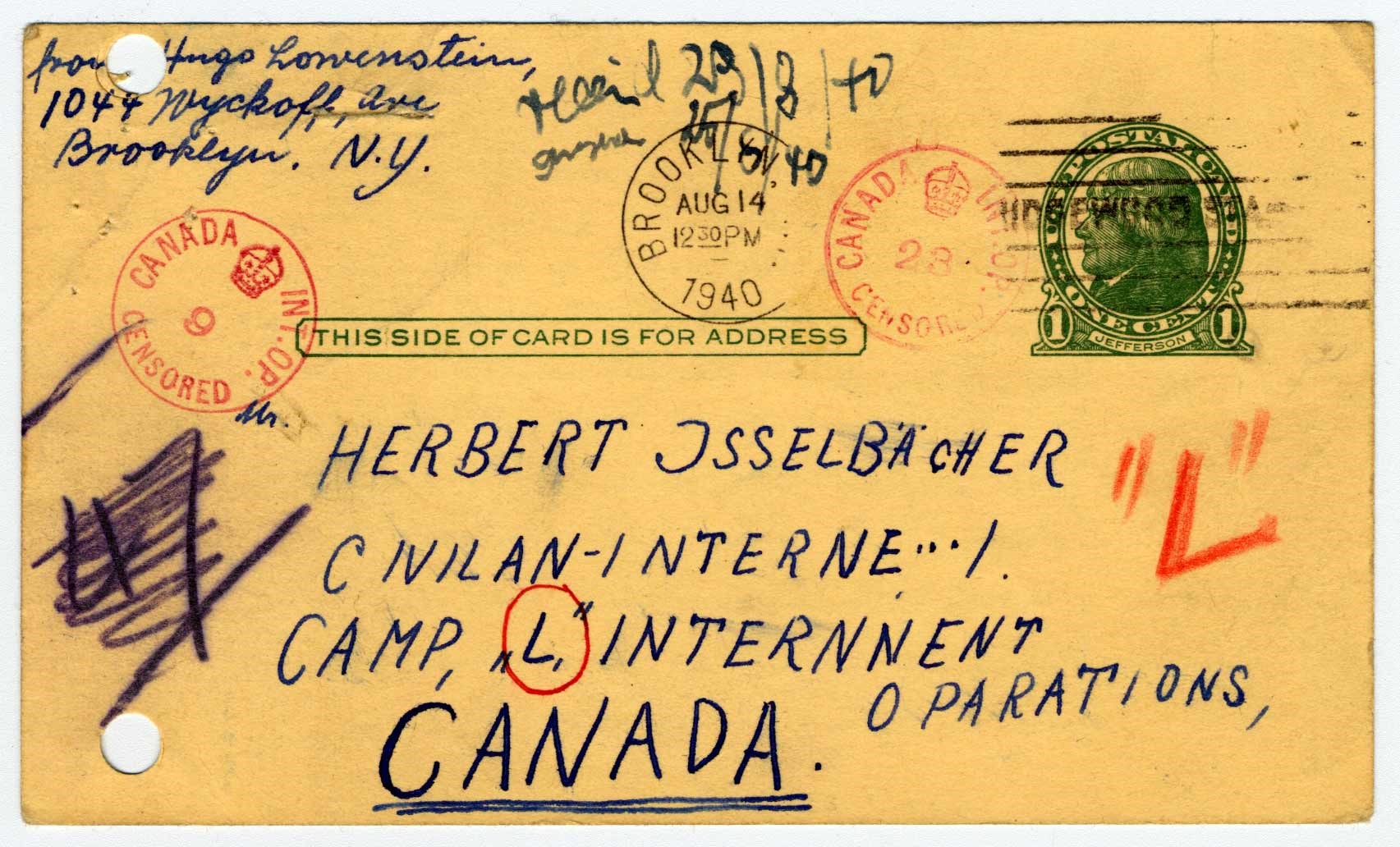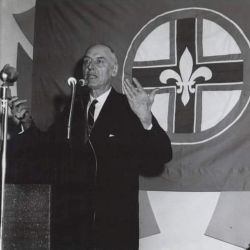When we think of the 1930s and 1940s, we immediately hearken back to the events of geopolitical strife in Europe. However, Canada also went through turbulent times in that era. For example, the country saw a rise in anti-Jewish sentiment after the 1929 economic crash. To explain how this anti-Semitism grew, this article looks at the immigration of Jews to Canada, their internment in the east part of the country, and the rise of Nazism in Canada.
Jewish immigration to Canada
Canada’s immigration policy has always been racially selective and economically selfish. The situation in the early 1930s and the dire impacts of the economic crisis further reduced opportunities for people to immigrate here. The government’s immigration policy focused on the single goal of keeping Canadian unity intact. William Lyon Mackenzie King, the Canadian Prime Minister at the time, knew that letting Jewish refugees settle in Canada would jeopardize his future re-election. In fact, his government’s policy was based on the fear of a backlash against Jewish immigration given the significant anti-Semitism shared by many Canadians at the time. Jews were therefore restricted to just a few areas in the country with a cap on their numbers. For example, the government asked the Canadian National Land Settlement Association (a division of CN) not to accept Jewish farmers as they did not believe they were actually farmers and thought they would instead move to the city, where unemployment remained high.
The Jewish immigration experience was also impacted by the situation in Germany. When Hitler rose to power, Canada did nothing out of a desire to steer clear of Europe’s problems. In 1940, or soon after the Second World War broke out, the UK began discussions with Canada, asking it to take foreign internees, prisoners of war, and evacuated children. The United Kingdom first asked Canada to take 9,000 German “enemy aliens” and prisoners of war, which the Canadian government rejected outright.
The best-known example of how hard it was for Jews to immigrate to Canada was when, in 1939, the MS Saint-Louis luxury liner carried 907 German Jews trying to escape Nazi persecution. The passengers were turned away from Cuba, some South American countries, and the United States, before they headed for Halifax, where they were again refused entry. In the end, the ship returned to Europe.
Edgar Strauss’ passport, 1939-07-31
The first page bears a J stamped in red ink to designate the subject as Jewish. The subject’s name has been changed to include the middle name Israel as a further identifying measure. The second page has a black-and-white photograph of the subject. The signature below the photo also bears the middle name Israel. The third page contains the subject’s physical description and lists his occupation as a merchant. The passport was issued on July 31, 1939. Pages 6-7 contain several stamps required to leave Germany and enter England.
Edgar Strauss obtained this passport and the necessary visas to leave the country. He traveled to England, arriving in Harwich, where he worked in a machine shop. After the Battle of Dunkirk in June 1940, the UK interned all German citizens as “enemy aliens”. Edgar was sent first to the Isle of Man, then to internment camps in Canada. He spent time at Camp T, Trois-Rivières, Quebec; Camp B, New Brunswick; and Camp I, Île aux Noix, Quebec. He was released in 1942 and settled in Montreal.

Internment camps
Jewish refugees who did manage to come to Canada were sent to different camps in the east. Even when in a friendly country, internment was a traumatic experience for the Jewish refugees, as many had experienced the Nazi concentration camps and felt that their allies betrayed them by putting them in camps as well.
However, the Canadian internment camps did seem like normal daily urban life, with their schools, cafés and places of worship. Canadian Jewish organizations and charitable groups provided the internees with what they needed to maintain this illusion of normal life. Sports and the arts also played an important role in their daily lives.
Surprisingly, internment had positives for some refugees, as those wanting to settle in North America after the war could learn and perfect their English. The camp also set up schools that provided academic, religious and technical education to the prisoners and refugees. The camp in Sherbrooke alone ran seven different educational programs. Internees at the Île-Sainte-Hélène camp were eventually allowed to write the McGill University entrance exams so that they could go to university after being released.
Hitler persecuted them: Canada jailed them, 1980-10-18
Eudice Bauer, the wife of Gustav Bauer, who was also an internee at a Canadian internment camp, donated this document. Gustave was born in 1924 in Hamburg, Germany, and was on vacation in Denmark with his mother Anna and his brother Werner when the Nuremberg Laws of 1935 were passed. They decided not to return to Germany, and went to stay with Anne’s sister in Brussels, Belgium. Gustav’s father Manfred was arrested for smuggling money out of Germany and spent the next two years in prison. Manfred joined his family in Brussels when he was released from prison in 1937. In 1940, immediately before Germany occupied Belgium, all German males born before 1924 were ordered to register. Manfred and Werner were sent to France, where they were interned. On their way to France to join them, Gustav and his mother were arrested and sent to England on the last boat to leave Belgium before it was occupied. In England, Gustav spent time in Folkestone, Pentonville Prison, Kempton Park, and Douglas, Isle of Man. He was in England from May 19 to July 4, 1940. IOn July 4, 1940 he was sent to Canada on the S.S. Sobiesky with other German nationals as prisoners of war.He was in Camp T, in Trois-Rivières, Quebec, from July 15 to August 12, 1940. He was then moved to Camp B, in New Brunswick, and then in 1941 was sent with other Jewish internees to Camp I, Île aux Noix, Quebec. He was sponsored for release in 1942, and his mother joined him in Canada in 1947. His father was deported from Drancy to Majdanek in 1943. His brother, Werner survived, got to Palestine and came to Canada in 1948 for Gustav’s wedding. He ended up a Hebrew teacher in Ottawa.
The document contains an article on internment camps in Canada, written by a former internee.
However, life was much harder at other camps in Canada. Many refugees were sent to the Red Rock camp in Ontario, about fifty of whom identified as Jews. This camp was also mainly used as a detention centre for pro-Nazi Germans. There, many of the Canadian guards, who were veterans of the First World War but were denied active service for the Second World War, offered rewards and money to inmates who would make or get them Nazi insignias or symbols. A small workshop was set up at the camp that took orders for Nazi swastikas. The Nazis also played practical jokes on the Jewish internees. For example, when the Jews were allowed to eat kosher on Yom Kippur, some Nazis working in the kitchens replaced the food with fried pork.


The rise of Canadian Nazism
Nazis sympathizers were not only at the Canadian internment camps. In fact, the Nazi movement in Canada, which German organizations like the Deutscher Bund Canada (German Alliance of Canada) helped set up, gained momentum through pro-Hitler clubs, subscriptions to German literature, or publicity for Nazi events in Germany. The Nazi Party’s involvement in Canada is difficult to fully pin down, as German aid rarely came in monetary form, which significantly limited the support provided. However, as propaganda was a major weakness of the Deutscher Bund Canada, the Nazi government provided much-needed assistance to bolster the success of their movement.
But while English Canada had its own pro-Nazi factions, nowhere was this movement stronger than in Quebec. The interwar period in Quebec was marked by a revival of French-Canadian nationalism due in part to the economic crisis. The fascist anti-Semitic movement in Quebec was organized around the personality and ideas of Adrien Arcand, whose ideology and “blue shirt” militants were inspired in part by the anti-democratic and racist ultranationalism of Lionel Groulx that advocated for stripping Jews of their civil and political rights. Arcand’s blue shirts wanted to help Quebec rise out of the economic crisis that was raging around the world. As part of the National Social Christian Party, Arcand’s blue shirts reached a wide public audience through a range of publications, and their news was carried in mass-circulation newspapers such as Le Devoir and La Presse.
Berstl, Norbert – Under Consideration, 1942
Kurt Anstreicher M.D. purchased the item in an internment camp. It was later found in his personal papers after his death in January 2002.
Kurt Anstreicher, M.D. was born in Austria in 1911 and studied medicine at the University of Vienna Medical School. He was working there when the Germans annexed Austria, and was forced to leave his post because of anti-Jewish legislation. He found refuge in Great Britain, but was taken prisoner there at the start of the war. He was sent to Canada for internment at Camp Farnhman in the province of Quebec. At Farnham, he became the camp physician. It is thought that he acquired these drawings directly from the artist Norbert Berstl in Farnham.
Ongoing trials and tribulations
For the Jewish refugees, Canada was just a dot on the map and a country whose doors were closed and would always be closed. When Auschwitz became an extermination camp, the warehouses used to store the Jews’ stolen possessions were called “Canada,” or a place of great abundance that was off-limits and closely guarded[1].
[1] As quoted in Erna Paris’s Jews, An Account of Their Experience in Canada (1980), p. 58.
Cover photo: Adrien Arcand, leader of the National Unity Party, gives a speech during a rally at the Paul-Sauvé Center in 1965 (BAnQ archives).
Article written by Rosalie Racine, PhD candidate in history at the Université de Montréal, for Je Me Souviens. Images provided by the Montreal Holocaust Museum, whose collaboration we’d like to thank very much! Translated by Amy Butcher (traductionsamyb.ca).
Sources:
- “Camp History & Information“, New Brunswick Internment Camp Museum.
- “Internment in Canada“, L’encyclopédie canadienne/The Canadian Encyclopedia.
- “Réfugiés juifs de 1939 : des excuses officielles de Trudeau le 7 novembre“, Radio-Canada (in french).
For a more academic approach, we recommend the following books:
- Irving Abella & Harold Troper, None is too many: Canada and the Jews of Europe, 1933–1948, Toronto, Key Porter, 2000, 340 p.
- Jean-François Nadeau, Adrien Arcand, führer canadien, Montréal, Lux, 2010, 408 p. (in french).
- Jonathan F. Wagner, Brothers Beyond the Sea: National Socialism in Canada, Waterloo, Wilfrid Laurier University Press, [2012] 1981, 190 p.
- Ernest Robert Zimmermann, The Little Third Reich on Lake Superior: A History of Canadian Internment Camp R, Edmonton, University of Alberta Press, 2016, 346 p.




